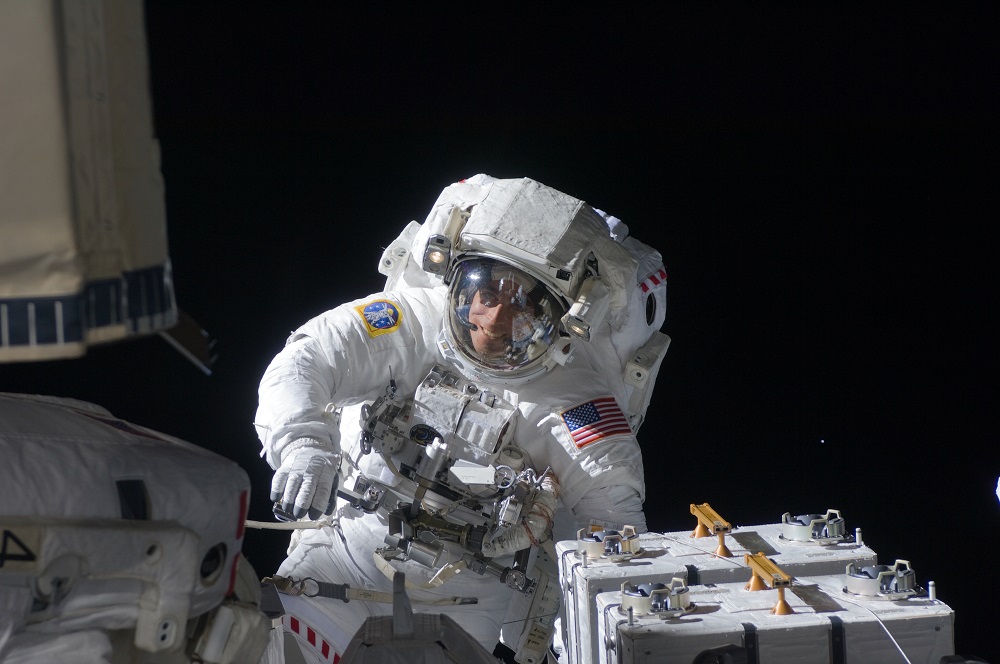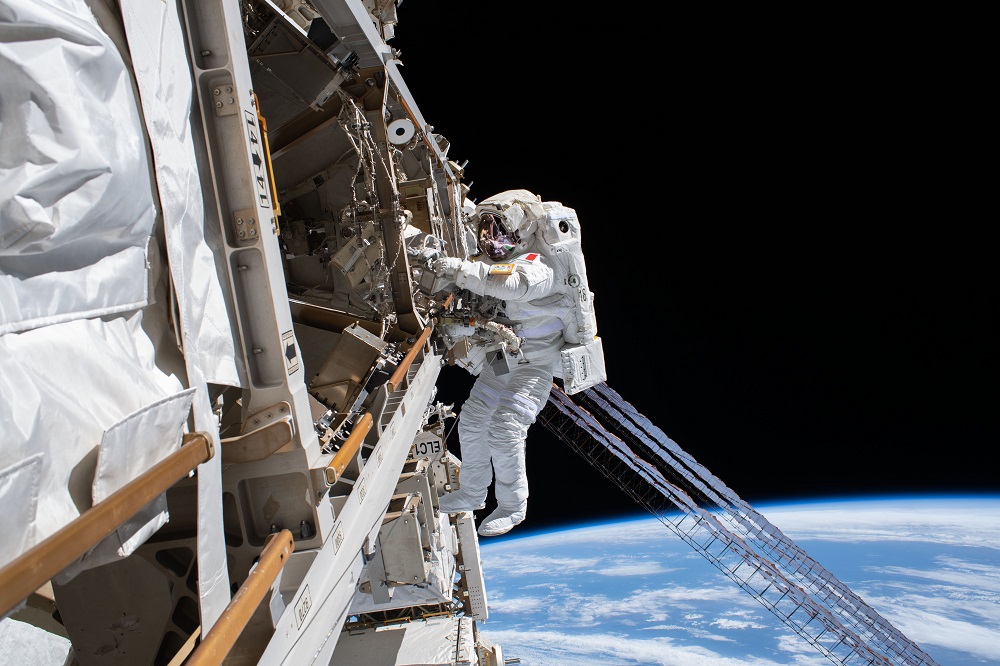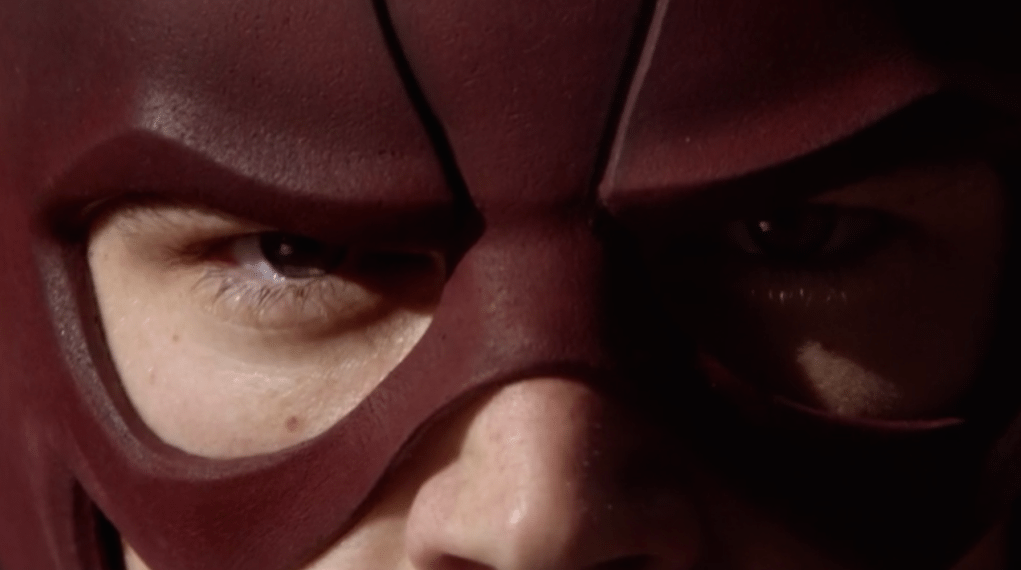Beginning in the late 1950s and extending through the early 1970s, astronauts were big celebrities as they ventured where no person had gone before. Millions would watch the first astronaut orbit the earth or land on the moon. However, with the advent of the Space Shuttle and then the International Space Station, going into space seemed more commonplace. Recently there has been more interest as private companies are beginning to take over the roles in space previously only done by nations. Yet despite the attention, or lack thereof, by the media and the public in general, men and women have continued to venture into the dangerous vacuum of space to perform jobs that allow us to live our lives with the advanced technology we now find common.
What Is Among the Stars?
Among the Stars is a six-part limited series that follows NASA astronaut Captain Chris Cassidy and others as they train on Earth, blast off on top of rockets, and perform their jobs in space. The series also shows them living their lives back at home. Among the Stars is directed by Ben Turner and is a product of Fulwell 73 Productions. The series premieres Wednesday, August 6th, exclusively on Disney+.

Interview With Dr. Samuel Ting

I had the opportunity to interview Nobel laureate Dr. Samuel C. C. Ting about his role in Among the Stars. Dr. Ting won the Nobel prize in physics in 1976 for his discovery of a new subatomic particle, the J or psi particle. He also worked on measuring the size of the electron which came to the conclusion that the electron is so small it has no size. Currently, Dr. Ting is the Thomas Dudley Cabot Institute professor of physics at the Massachusetts Institute of Technology (MIT). Several of the episodes involve the Alpha Magnetic Spectrometer (AMS) located on the exterior of the International Space Station (ISS). Dr. Ting is the founder and leader of this experiment.
During our interview, Dr. Ting explained that the AMS is designed to understand the properties of the cosmos. In addition to light rays out in space, there are also charged particles which have a mass. When they enter the Earth’s atmosphere, they are either absorbed or break apart into secondary particles. Therefore, to measure the original properties of charged cosmic rays, you need to go to space to do it. Because the particles are charged, you need a magnet to separate the different particles. The magnet forces the positively charged particles to go one way and the negatively charged particles to go another way. He explained that putting a giant magnet in space was not easy. Due to the Earth’s magnetic field, such a magnet could cause the ISS to behave like a compass and lose control as it aligned with the magnetic field of our planet. Dr. Ting told me it took a long time to develop a magnet that does not rotate in space. There are over 300,000 individual detectors within the AMS to collect data which is then compiled by a computer on the ISS and finally sent via a satellite to be analyzed back on Earth. The AMS offers the first time accurate measurements of cosmic rays have been collected about not only protons and electrons, but also their anti-matter equivalents such as positrons and anti-protons to study their charges, momentum, and other data. In the past 10 years, the AMS has collected 180 billion charged cosmic rays with the equivalent energy of up to a trillion electron volts.
I asked Dr. Ting about working with NASA. He responded that his experience with NASA was excellent. However, AMS is not a NASA experiment. When Dr. Ting came up with the idea for AMS, he went to the U.S. Department of Energy for support. They were concerned that Dr. Ting’s previous experience involved underground experiments such as colliders. Space is quite different and very hostile and very expensive, they told him. During the series, astronauts work on the AMS and it shows Dr. Ting watching from NASA. I asked what it was like to have astronauts up in space working on his project while he was here on Earth. He responded, “Very, very tense.” I am grateful for the short time allotted for my conversation with Dr. Ting. He is an extremely interesting person and I could have talked to him for hours.

Be Sure to See Among the Stars
After watching several of the episodes in the series, I can state that I am very impressed with Among the Stars. The way the series follows Captain Cassidy along with other astronauts and people involved in the space program helps build a relationship between the viewer and those on the screen. I enjoyed watching the astronauts practice repair tasks they would later do in space while in NASA’s neutral buoyancy tank which is like a giant swimming pool. The series also shows the hard work and sacrifice that are part of an astronaut’s job and how close they operate to the line between life and death in unforgiving space. The visuals and cinematography are amazing. From the cramped interiors of the ISS to the vast expanses of space with the earth in the background for the footage taken during the spacewalks or EVAs, viewers almost feel like they are right there with the astronauts. I highly recommend Among the Stars as a great series you should not miss. It premieres Wednesday, October 6th on Disney+.

Check out the trailer for Among the Stars




